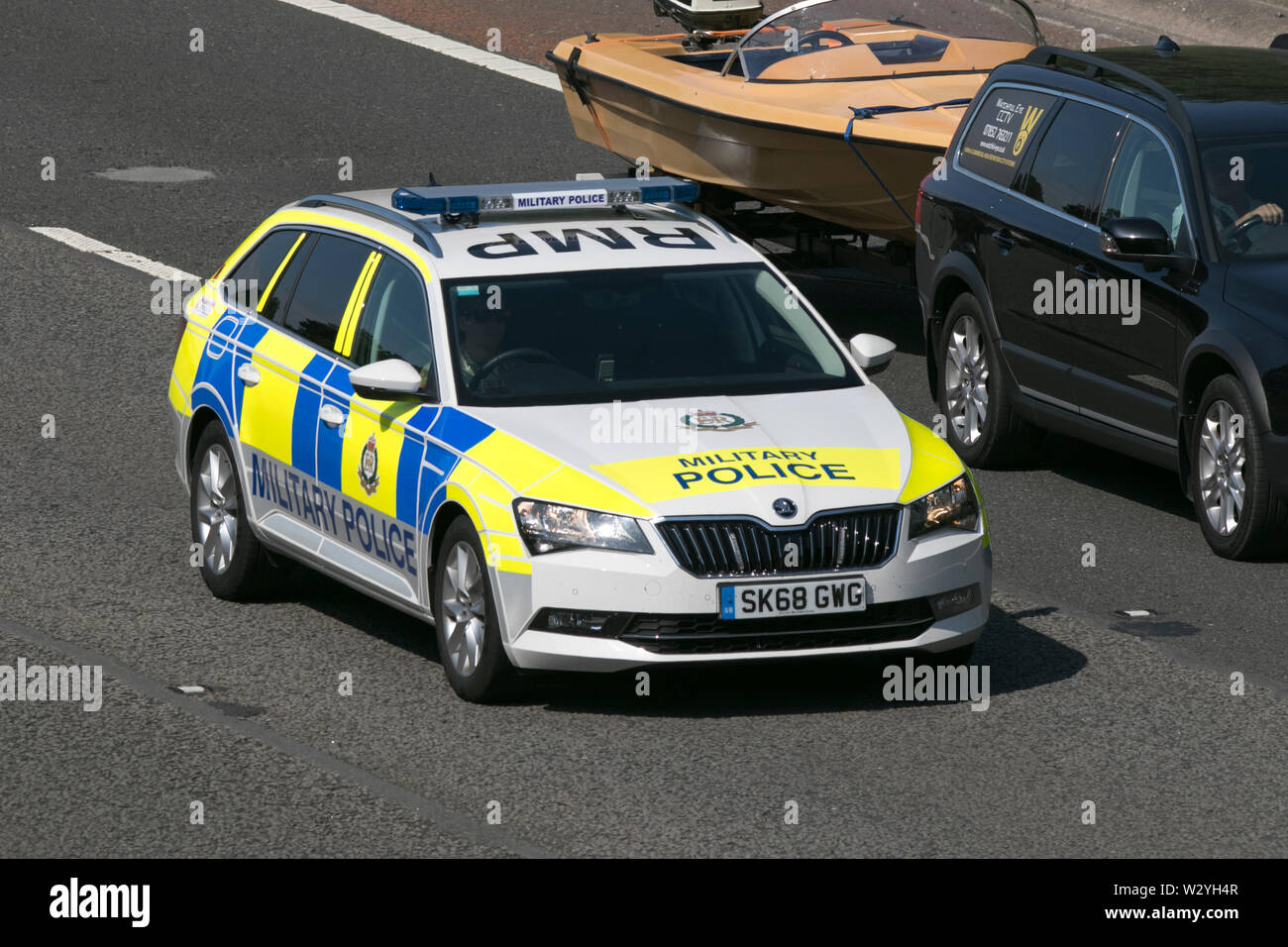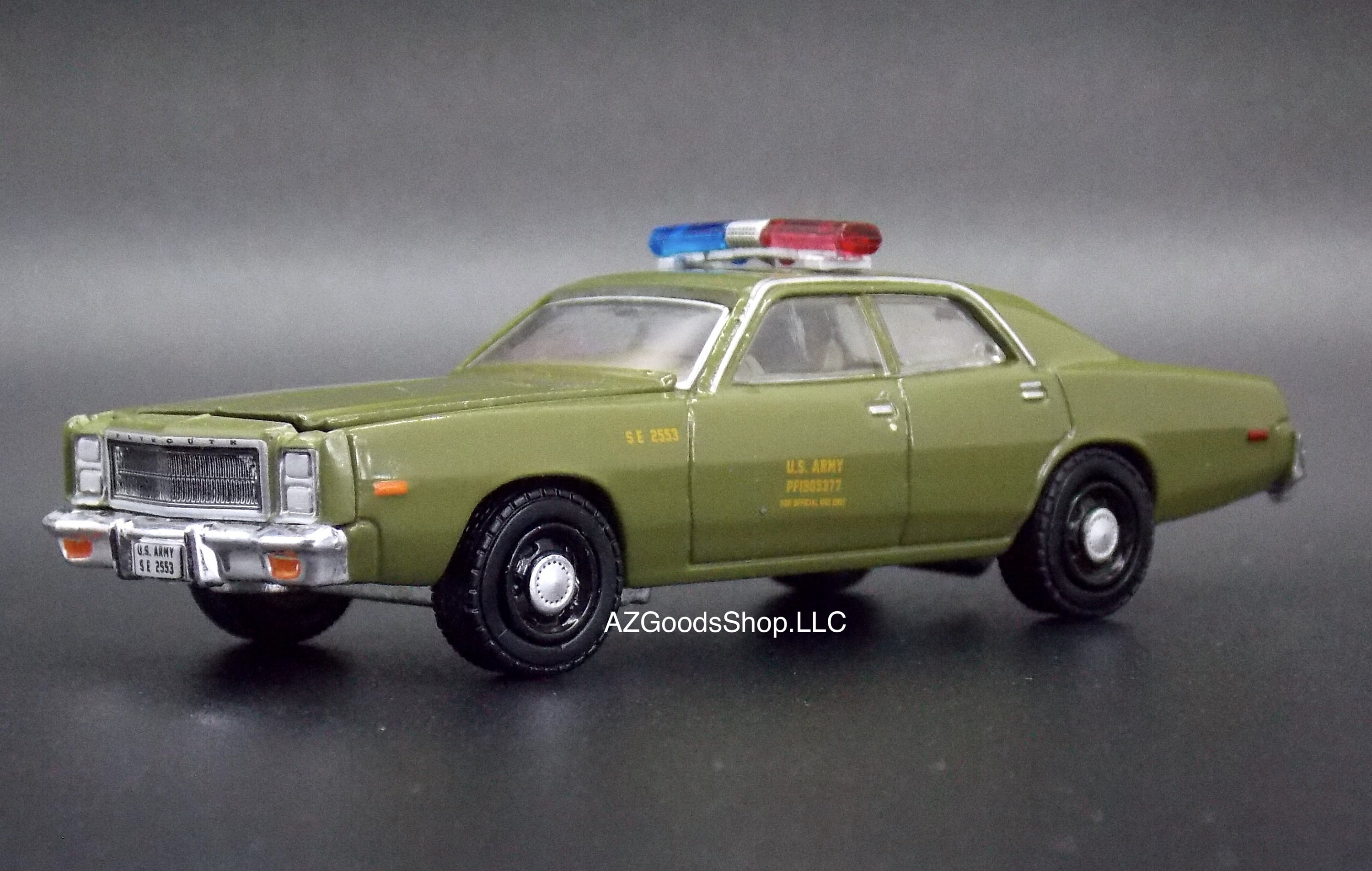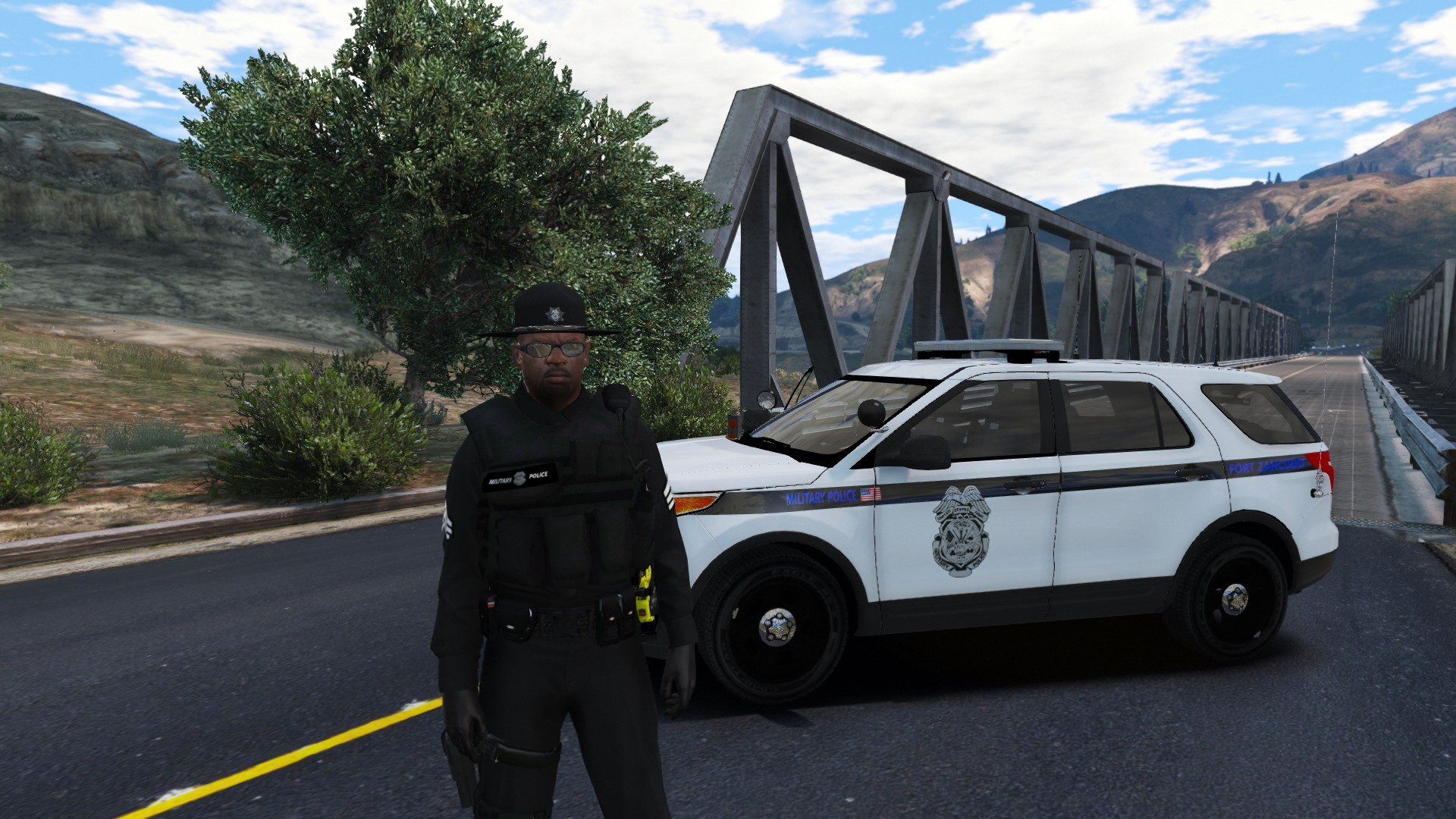Military Police Vehicles - Computer upgrades are planned to be installed on several Fort Bragg Military Police patrol cars, such as the one pictured here. These updates put an extensive online database at Fort Bragg's military police's fingertips, allowing them to learn important information… (Photo Credit: USA) VIEW ORIGINAL
FORT BRAGG, N.C. - The information is essential to maintaining public safety here at Fort Bragg. A military police officer who receives detailed information in time can be used to prevent a crime, apprehend a suspect, or save a life by summoning the appropriate emergency services.
Military Police Vehicles

Fort Bragg Military Police now have access to a vast database of information on the go.
U.s. Department Of The Army Military Police
Through a computerized system in their patrols, the Military Police has access to various state and national vehicle databases. They can even contact the 911 call center for information.
The system improves law enforcement operations by allowing a military police officer to look up vehicle or driver information without having to call dispatch to retrieve it.
Several systems will be in operation on Fort Bragg roads starting the last week of February.
"It's very important to be able to use your own tags," said Sean Doyne, patrol commander for the Fort Bragg Provost Marshal's Office.
Military Police Vehicles Enforcing Law And Order In Protest, War, And Conflict Driving Across The Desert Stock Image
Doyne praised the system's ability to quickly notify Fort Bragg law enforcement if a vehicle has been stolen, is involved in incidents in Fayetteville or if the driver has a suspended license.
Doyne also predicted that the new system would reduce radio traffic by several transmissions per stop.
With the reduced volume of radio traffic, there will be more room in the network for traffic from other agents, some of whom may need to dispatch emergency personnel to the scene of a life-threatening accident or “others requesting support to help catch a speeding vehicle. .

With these new upgrades to their vehicles, Fort Bragg Military Police are ready to protect those who protect America while on the road. Jacob Cardell, a soldier assigned to the Transportation Division, gets comfortable in one of five new Fort Leonard Wood Military Police Vehicle Standardization Team vehicles that law enforcement officials are receiving as part of the… (Photo Credit: USA) VIEW ORIGINAL
File:military Police Austria Patrol Vehicle 25102019.jpg
Fort Leonard Wood's Directorate of Emergency Services, a division of law enforcement, received new additions to its fleet as part of a targeted presidential directive.
Joint Standardization of Law Enforcement Vehicle Equipment is a GSA lease option initiated and managed by the Directorate of Force Protection/Marshal Facilities Command to save money, modernize and set a standard for the entire military, according to the IMCOM brief.
Five were recently put into rotation on the streets of Fort Leonard Wood, with six more scheduled soon and five more by the end of the fiscal year, said Capt. Robert Ishmael, supervising police officer with the Traffic Division, DES.
Ishmael said DES was receiving a standard vehicle from GSA and would have to install law enforcement features to make it sufficient for use. Those changes, including the addition of lights, cages and emergency equipment, he said, would cost DES a lot of money not only to purchase and install, but also to run after the lease ends.
New Top Cop For Scottsdale
"With IMCOM sending prepackaged vehicles, we won't have the added cost of having to buy everything from the DES budget here," he said.
Ishmael estimates that the JSLEVES initiative will save DES approximately $5,000 per vehicle, and the savings will be applied to other areas of need within law enforcement.
"We have more money to advance our other research projects," Ishmael said. "We purchase items for our major emergency teams such as electronic police investigative equipment, special event items, go-karts and bulletin board signs."

Ismael also said the savings give DES a chance to upgrade, adding that the new cars will have computers so officers can report on the spot.
Armed Response Vehicle
Officers who drive the new cars aren't so much focused on the new gadgets, they say, more about being in a safer vehicle designed for law enforcement, said Sgt. Jacob Cardell, a soldier assigned to the Transportation Division.
The addition of new vehicles ensures that DES can provide needed services to the Fort Leonard Wood communities.
"(Having the new vehicles) is about making sure our officers are on call so we can serve the public efficiently and effectively," Ishmael said. "We don't worry about whether we have enough cars to police the streets." Amid the protests, some want to end the program that sends military equipment to local law enforcement agencies. Above, police drive an armored vehicle on May 31 in Bellevue, Washington. David Ryder/Getty Images
For decades, police departments have acquired military-grade weapons such as grenade launchers and armored vehicles at low cost through the Department of Defense's controversial 1033 program. The program has sent more than $7 billion in surplus military equipment to more than 8,000 local law enforcement agencies across the country. world. country, claims the office that oversees the program.
Greenlight Licensed 1:24 Scale Ateam 1977 Plymouth Fury Us Army Police Toy Car
As more footage emerges of riot police confronting peaceful protesters marching against racism and police brutality, several lawmakers on both sides of the aisle are calling for an end to a program arming civilian officers with gear normally used in active combat.
The 1033 program was introduced in 1997 under the Clinton administration amid a push to strengthen law enforcement's ability to fight the war on drugs. Transfer surplus or obsolete military equipment to requesting state and local authorities, who are solely responsible for transportation costs.
The program came into the spotlight in 2014 due to the militarized police response to the Black Lives Matter protests in Ferguson, Missouri, following the police shooting of Michael Brown. The Obama administration responded by placing certain restrictions on the types of items that could be transferred to police departments, but those restrictions were lifted by the Trump administration in 2017.

Supporters of 1033 point out that it's not just weapons: much of the equipment transferred is everyday items like office supplies and clothing. But critics say access to high-powered weapons and tactical vehicles allows local agencies to build large police forces and encourages police violence.
A Jeep Of The British Military Police Drives Past An Armoured Vehicle From The Soviet Zone With A..., Stock Photo, Picture And Rights Managed Image. Pic. Pah 26184518
"People are seeing for the first time how militarized the police force is. And that militarization is potentially contributing to the higher level of violence that we're seeing in this particular movement that's happening right now," Sabrina Karim, a professor of government at Cornell University, told Morning magazine host Report by David Brancaccio. .
"I will also say that militarized policing is not specific to protest response. But it's also a kind of everyday policing. So you see things like the no-frills raids that killed Breonna Taylor," he said.
Karim spoke with Brancaccio about how the program has changed the way police interact with communities across the country. The following is an edited transcript of their conversation.
David Brancaccio: So the idea is that the Pentagon originally bought these things for the military, they don't need them anymore and they can give them to local police departments. And it's not just about flashlights. Some of them are pretty heavy stuff.
Australian Military Police Hilux
Sabrina Karim: Right. So we have everything from office equipment, clothes, tools, radios. But then we have some pretty heavy stuff like armored vehicles, assault rifles, grenades, and something called the Ambush Resistant Vehicle Protected Vehicle (MRAP), which was invented by the Department of Defense as a counterinsurgency strategy to combat IED attacks. in Iraq and Afghanistan.
Now, this program for the MRAPs, as they are called, was a very expensive program in the billions, costing about $800,000 per vehicle. And so there was a surplus of them as the military developed more efficient vehicles. So what do you do with the excess MRAPs that were built? One solution was to transfer about 600 of them to local law enforcement through this program.
Brancaccio: And these vehicles were not considered an unqualified success when the military was initially deployed. They were fuel hogs in the first place, I remember.

Karim: Yes, they are energy inefficient as well as inefficient in their counterinsurgency intent because they are large vehicles that essentially prevent soldiers from interacting with the community. And so, if they were ineffective in counterinsurgency, I'm not entirely sure they would be effective in law enforcement at the local level, where the role of the police is to engage with the community.
Military Police Vehicle
Karim: Exactly. This is a transfer, so agencies do not have to pay for this equipment. So since the government already owned it, paid for it, it is owned by the Department of Defense. So it's a way to transfer excess material, excess equipment, excess vehicles that are obsolete, maybe they've acquired too many of them, to local and state authorities. Studies have shown that on average, a county receives about $58,000 a year for equipment, and an agency can receive an average of about $48,000 for equipment.
Karim: They can be, yes.
Lego military vehicles, us military police vehicles, military vehicles magazine, 1 64 military vehicles, us army military police vehicles, army military police vehicles, military discount on vehicles, military vehicles, military police, police military vehicles, police vehicles, military discount vehicles

0 Comments